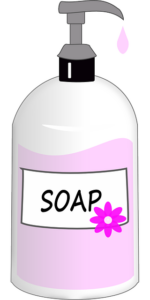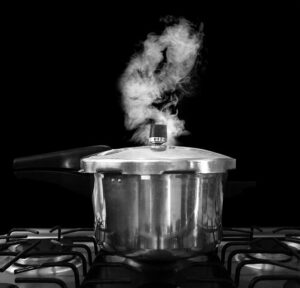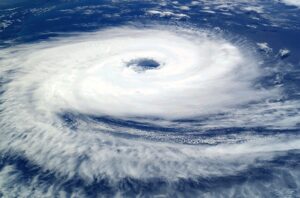The relative pressure is also termed the gauge pressure used to measure the pressure in industries and factories.
Relative pressure is the pressure relative to atmospheric pressure. The absolute zero of the relative pressure is equal to the atmospheric pressure. The pressure above the absolute zero is positive relative pressure and a pressure below the absolute zero is negative relative pressure. Here is a list of relative pressure example:-
LPG Cylinder
Liquid petroleum gas cylinders are filled with flammable gas stored in the liquid form due to compression as the pressure inside the cylinder is high.
When the knob of the gas is turned on, the valve is opened and the gas overcoming this pressure runs through the pipe and passes to the burner.
Soda Cans
The soda can is filled with carbon dioxide gas. The pressure inside the soda can is the addition of the pressure due to carbon dioxide gas inside the container.
Bursting the Balloons
A pressure felt on the balloon filled with the gas molecules depends upon the type of the gas-filled inside the balloon, and it will be the sum of the molecular pressure on the surface of the balloon inside, the air resistance force on the outer surface of the balloon which is the atmospheric pressure.

On putting the pressure on the volume of gas inside the balloon to burst it, the relative pressure on the balloon is larger than the atmospheric pressure.
Compressing the Sponge
A sponge is easily compressible as it has many vacant spaces. These vacant spaces are filled with air which is removed by applying the pressure in two different directions opposite to one another. The relative pressure thus incident on the sponge is bigger than the atmospheric pressure.
Piston in Vehicles
The diesel in the vehicle is burnt during the combustion process which is possible due to the motion of the piston. The air is heated up as it undergoes compression. The relative pressure due to compression and expansion of air due to the piston is positive and negative respectively.
Pumps
As we press the pump, the pressure exerted on the air filled inside the pump is greater and hence it drags out through the outlet.

Once the pressure is removed, the air easily makes way and fills the pump.
Pipette
When you are taking out the solution using a pipette, the force is exerted on the solution under the atmospheric pressure initially which is taken as an absolute zero of the relative pressure.

The pressure on the solution inside a pipette is due to the pressure applied while sucking and the molecular and surface tension on the interior surface of the pipette.
Filling the Cycle Tire
The pressure of the air-filled tire of the cycle is more compared to the atmospheric pressure. Suppose the relative air pressure shown on the gauge pressure meter is 2.75 atm then the actual pressure is actually the sum of the relative pressure plus the atmospheric pressure i.e. 2.75 + 1 atm = 3.75 atm.
Pressure Cookers
The pressure inside the pressure cooker is between 15 psi to 30 psi. The normal atmospheric pressure is 14.7 psi.

Hence, the temperature at which the water boils inside the cooker is more than the normal boiling point temperature of the water. If the relative pressure is 20 psi of the pressure cooker then the actual pressure is 34.7 psi.
Air Conditioners
The air inside the machine entering from the inlet of the ac is compressed using a compressor and hence the relative pressure measured at the compressor is between 60 – 85 psi. This gas is then condensed and cooled down and later expands and clean air is released out.
Oxygen Cylinders
There are many gases available in the atmosphere and our body needs oxygen to function. The clean oxygen is supplied to the human having deficiency of the oxygen. Hence, the oxygen is trapped excluding other gases by purifying and is stored in the liquid oxygen form in the cylinder.
The oxygen gas is first compressed and then condense passing through a pipe where the coolant liquid is flowing outside the pipe to drain out the excess heat generated due to compression. This is further condensed and stored in the cylinder fitted with the gauge meter to measure the pressure inside the cylinder.
Papers Flying in the Air in the Breeze
If you hold a plane paper in front of a table fan in such a way that the paper flies horizontally along with the breeze. The air pressure is exerted on the above layer of the paper as well as below the layer of the paper that keeps it floating horizontally.
Heating of Sea Surface
During the hot summers when the sun rays are directly incident on the surface of the seawater, the sea level temperature rises and the pressure falls down. The relative pressure above the sea level is negative as the pressure goes below 1 atm due to rising sea surface temperature. The fall in pressure may result in hurricanes or tornadoes.

Refrigerator
Inside the refrigerator, the heat from the food item is released in the form of vapor. These vapors move freely and get dense and settle down on the wall of the refrigerator forming a frost. The relative pressure in the refrigerator is due to the molecular pressure of these vapors.
Steamers
As the water boils inside the steamer, the molecular bond between the atoms breaks due to the absorption of heat energy; the stream thus developed on the conversion of liquid to gaseous phase is under pressure which flows out to the area of lower pressure.

Inside the steamer, the vapor pressure is more than the atmospheric pressure hence the relative pressure is positive here.
Pressure Inside a Pipe
Suppose the pressure measured on the gauge is 800 Pa in the vacuum inside a pipe, then this is a relative pressure in the vacuum is 800 Pa lower than the atmospheric pressure. The absolute pressure therefore is
Pabs=Patm+Pvac
Pabs=101325-800=100525Pa
Frequently Asked Questions
What is the relative pressure if the absolute pressure is 1.8 atm?
Given:
Pabs=1.8atm
We know that
Patm=1atm
Since,
Pabs=Patm+Pgauge
Pgauge=Pabs-Patm
Pgauge=1.8-1=0.8atm
Hence, the relative pressure is found to be 0.8 atm.
What is the absolute zero of the relative pressure?
The absolute zero is equal to the atmospheric pressure of 1 atm.
The relative pressure is pressure measured on a gauge meter which shows the pressure at zero psi when it comes to normal atmospheric pressure conditions hence absolute zero of the relative pressure is equal to the atmospheric pressure.
What is absolute pressure?
The absolute pressure is formulated as Pabs=Patm+Pgauge, where Pgauge is a gauge pressure and Patm is an atmospheric pressure.
The absolute pressure is a sum of the combination of the gauge pressure measured using a gauge meter and the atmospheric pressure in which the system is present.
Can relative pressure be negative?
The relative pressure can be negative if it is below the atmospheric pressure.
The absolute zero of the relative pressure is taken as the atmospheric pressure hence the pressure below this absolute zero will be negative relative pressure.
Also Read:
- Negative pressure example
- Hydrostatic pressure example
- Ocean pressure example
- Vapor pressure vs boiling point
- Melting point and pressure
- Dynamic pressure example
- Dew point and pressure
- Does viscosity change with pressure
- Gauge pressure example
- Pressure in dynamic equilibrium
Hi, I’m Akshita Mapari. I have done M.Sc. in Physics. I have worked on projects like Numerical modeling of winds and waves during cyclone, Physics of toys and mechanized thrill machines in amusement park based on Classical Mechanics. I have pursued a course on Arduino and have accomplished some mini projects on Arduino UNO. I always like to explore new zones in the field of science. I personally believe that learning is more enthusiastic when learnt with creativity. Apart from this, I like to read, travel, strumming on guitar, identifying rocks and strata, photography and playing chess.